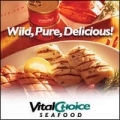 Print This Post
Print This Post
Dr. Myatt Said This Funny Was Too Racy…
Written by Wellness Club on October 5, 2010 – 1:25 pm -Dr. Myatt Said This Funny Was Too Racy…
You decide
By Nurse Mark
This story was sent to us by a friend recently – Dr. Myatt and I thought it was both cute and funny so I said “Let’s put it in the next HealthBeat!” Dr. Myatt disagreed, saying that some of our readers might be offended. I said “we’ll put it in and see how many nasty letters we get – surely our readers are big boys and girls and can handle a little risque humor…” Dr. Myatt said, reluctantly, “OK, but you do the apologizing if it offends anyone!”
Well, here it is – and I’ll apologize in advance if this offends anyone’s sensibilities.
A couple made a deal that whoever died first would come back and inform the other of their sex life after death.
Their biggest fear was that there was no after-life at all.
After a long and happy life together, the husband was the first to die.
True to his word, he made the first contact: “Judy… Judy….”
“Is that you, George?”
“Yes, I’ve come back like we agreed.”
“That’s wonderful! What’s it like?”
“Well, I get up in the morning, and I have sex. I have breakfast and then it’s off to the golf course. I have sex again, bathe in the warm sun and then have sex a couple of more times. Then I have lunch (you’d be proud Judy – lots of greens). Another romp around the golf course, then I pretty much have sex the rest of the afternoon. After supper, it’s back to golf course again. Then it’s more sex until late at night. I catch some much-needed sleep and then the next day it starts all over again”
“Oh, George…are you in Heaven?”
“No………..I’m a rabbit in Kansas.”
Related Posts
 Print This Post
Print This Post

Posted in Funnies | Comments Off on Dr. Myatt Said This Funny Was Too Racy…





































